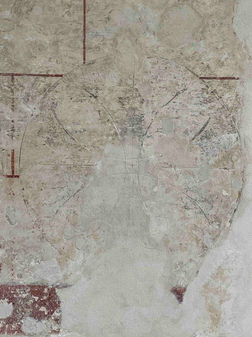

THE TEMPLARS
IN BUCKINGHAMSHIRE
The Knights Templar in Buckinghamshire
Buckinghamshire holds a rich yet often overlooked connection to the legendary Knights Templar. During the 12th and 13th centuries, the Templars established a number of preceptories (monastic estates) in the county, These sites served both as spiritual centres and as operational hubs for the Templars’ extensive landholdings, helping to fund their crusading efforts in the Holy Land. Today, traces of their presence remain in place names and local lore, offering a fascinating glimpse into a secretive and influential medieval order.
BULSTRODE
RADNAGE - St. Mary the Virgin Church
The Knights Templar and Radnage, Buckinghamshire
The village of Radnage in Buckinghamshire holds a remarkable connection to the Knights Templar, the famed medieval military order. In 1214–1215, King John granted the manor of Radnage to the Templars of London. This early acquisition suggests it preceded the foundation of their Preceptory at Bulstrode, highlighting Radnage’s significance in the Templars’ local holdings.
Alongside the manor, the Templars held the advowson of the Church of St Mary the Virgin, located further within the village. The parish church, dating from the late 12th or early 13th century, is widely believed to have been constructed during the Templar period and remains the principal medieval structure reflecting their presence in Radnage.
The first recorded rector of the church, Richard Poleworth, was appointed in 1231 by the Knights Templar under their advowson. He served until 1269, when the Templars transferred the advowson to the Knights Hospitallers. The Hospitallers presented William de Fulham in 1269 and continued to present a further 31 rectors over the next three centuries. The last rector presented by the Hospitallers, also known as the Order of St John, was William Grate in 1558.
While detailed records of the manor’s acreage are lacking, the size of Radnage Manor, combined with the construction of the church, indicates the Templars’ substantial investment in the area. Today, the Manor of Radnage survives at Radnage Bottom Farm, preserving a tangible link to this medieval chapter of the village’s history.
The Church of St Mary the Virgin also retains many of its original medieval wall paintings, offering a rare glimpse into its historic past. Among these is a partially covered depiction of St Christopher, which was obscured during the Reformation; only the Christ Child, blessing with the right hand, the orb in the left, and the saint’s head remain. Additionally, two worn crosses on the north tower walls may date from the Templars’ time or could be consecration crosses, further hinting at the church’s deep-rooted medieval heritage.
Radnage’s surviving landmarks—both manor and church—stand as enduring testaments to the Knights Templar’s and Knights Hospitallers’ presence, offering a fascinating window into Buckinghamshire’s medieval history.
CHALFONT ST. PETER
TEMPLE WYCOMBE
STONY STRATFORD
HEDGERLEY
MAIDS MORETON MANOR
GERRARDS CROSS

TEMPLAR FIGURES AT BUCKINGHAMSHIRE
Knights Templar at Buckinghamshire





